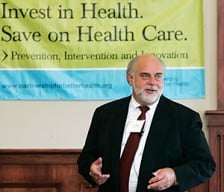Boost health to reduce costs

.bodytext {float: left; } .floatimg-left-hort { float:left; margin-top:10px; margin-right: 10px; width:300px; clear:left;} .floatimg-left-caption-hort { float:left; margin-bottom:10px; width:300px; margin-right:10px; clear:left;} .floatimg-left-vert { float:left; margin-top:10px; margin-right:15px; width:200px;} .floatimg-left-caption-vert { float:left; margin-right:10px; margin-bottom:10px; font-size: 10px; width:200px;} .floatimg-right-hort { float:right; margin-top:10px; margin-left:10px; margin-bottom:10px; width: 300px;} .floatimg-right-caption-hort { float:left; margin-right:10px; margin-bottom:10px; width: 300px; font-size: 10px; } .floatimg-right-vert { float:right; margin-top:10px; margin-left:10px; margin-bottom:10px; width: 200px;} .floatimg-right-caption-vert { float:left; margin-right:10px; margin-bottom:10px; width: 200px; font-size: 10px; } .floatimgright-sidebar { float:right; margin-top:10px; margin-left:10px; margin-bottom:10px; width: 200px; border-top-style: double; border-top-color: black; border-bottom-style: double; border-bottom-color: black;} .floatimgright-sidebar p { line-height: 115%; text-indent: 10px; } .floatimgright-sidebar h4 { font-variant:small-caps; } .pullquote { float:right; margin-top:10px; margin-left:10px; margin-bottom:10px; width: 150px; background: url(http://www.dmbusinessdaily.com/DAILY/editorial/extras/closequote.gif) no-repeat bottom right !important ; line-height: 150%; font-size: 125%; border-top: 1px solid; border-bottom: 1px solid;} .floatvidleft { float:left; margin-bottom:10px; width:325px; margin-right:10px; clear:left;} .floatvidright { float:right; margin-bottom:10px; width:325px; margin-right:10px; clear:left;} With his Southern drawl and ability to hold a crowd, John Miall resembles a televangelist when he talks about how he has assisted employers across the United States lower their health-care costs. And with similar fervor, he’s eager to help Iowa companies enjoy the same success.
Miall, former risk management director for the city of Asheville, N.C., was a chief architect of an approach his city pioneered to improve the health of employees with chronic diseases such as diabetes. The so-called Asheville Model, which has been adopted by more than 80 companies nationwide in the past two years, focuses on strategic spending on preventive care and prescriptions to manage chronic diseases and achieve double-digit decreases in total health-care costs.
Now a consultant for the American Pharmacists Association Foundation, Miall was among several experts from around the country who spoke last week at a National Health Care Summit in Des Moines hosted by the Iowa Association of Business and Industry.
“The reason we put on this forum is that members have shared with us that increasing health-care costs continue to be a major issue for them in the way they conduct their businesses,” said Michael Ralston, ABI’s president.
The event was sponsored by the Partnership for Better Health, a network of more than 20 Iowa-based health organizations seeking to increase awareness for the need to invest in health in order to save on health care. Launched earlier this year, the group advocates a three-part solution for reducing chronic disease and lowering health-care costs by focusing on prevention, intervention and innovation regarding chronic diseases.
About 70 people attended the three-hour event at the Forte Banquet and Conference Center. David Hom, a former human resources executive for Pitney Bowes Inc., also spoke about health initiatives the company adopted that significantly lowered its health-care costs.
In charge of Asheville’s self-funded health plan, Miall was frustrated with responding to higher costs by increasing co-payments and deductibles and reducing benefits. Recognizing that employees with chronic diseases such as diabetes accounted for most of the health plan’s costs, he persuaded city officials to adopt a pilot program to pay 100 percent of those employees’ prescription costs for a year, provided they participated in nine hours of health classes to learn how to better manage their condition and agreed to periodic health screenings.
The program reduced the city’s total health-care costs by 42 percent in the first year, and the number of sick days used by diabetic employees decreased by more than 50 percent, to about six days per employee per year.
“What started in Asheville two years ago with 48 patients has now grown to tens of thousands of patients in over 80 locations across the United States,” Miall said afterwards. “The program is very applicable to multiple diseases. What started with diabetes is now working with asthma, hypertension, cholesterol, and we have three beta sites for depression. So it seems to be replicable and scalable.”
Similarly, designing health plans to reward healthy behavior by employees was a key component in Pitney Bowes’ ability to lower overall health-care costs, Hom said. He has co-authored two books, “Total Value/Total Return: Seven Rules for Optimizing Employee Health Benefits for a Healthier and More Productive Workforce” and “BeneFIT Design: Seven Steps to Value-Based Health Benefit Decisions.” ABI distributed the books to seminar participants and plans to make them available free to Iowa businesses.
Some of the initiatives used by Pitney Bowes, which employs 35,000 people worldwide, include giving employees health premium credits of up to $250 per year for attending the company’s “health university” classes, low- or no-cost preventive screenings and low-cost healthy meal choices in the company’s cafeterias.
“We think it’s a very powerful process, because it drives behavior changes,” Hom said.
Ralston agreed that the most effective results come about when employers involve their workers in their own health care. And health insurers want to work with companies, he said.
“The first step would be to work with (the health insurer) to say, ‘What can we do to involve our employees more to make better decisions?'”
For more information about the Partnership for Better Health, visit its Web site at www.partnershipforbetterhealth.org. To obtain copies of Hom’s benefits design books, contact ABI at 280-8000.








